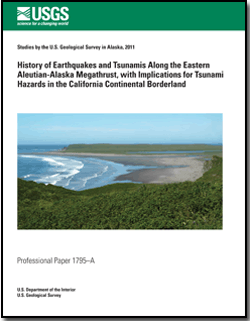 Abstract Abstract
During the past several years, devastating tsunamis were generated along subduction zones in Indonesia, Chile, and most recently Japan. Both the Chile and Japan tsunamis traveled across the Pacific Ocean and caused localized damage at several coastal areas in California. The question remains as to whether coastal California, in particular the California Continental Borderland, is vulnerable to more extensive damage from a far-field tsunami sourced along a Pacific subduction zone. Assuming that the coast of California is at risk from a far-field tsunami, its coastline is most exposed to a trans-Pacific tsunami generated along the eastern Aleutian-Alaska subduction zone. We present the background geologic constraints that could control a possible giant (Mw ~9) earthquake sourced along the eastern Aleutian-Alaska megathrust. Previous great earthquakes (Mw ~8) in 1788, 1938, and 1946 ruptured single segments of the eastern Aleutian-Alaska megathrust. However, in order to generate a giant earthquake, it is necessary to rupture through multiple segments of the megathrust. Potential barriers to a throughgoing rupture, such as high-relief fracture zones or ridges, are absent on the subducting Pacific Plate between the Fox and Semidi Islands. Possible asperities (areas on the megathrust that are locked and therefore subject to infrequent but large slip) are identified by patches of high moment release observed in the historical earthquake record, geodetic studies, and the location of forearc basin gravity lows. Global Positioning System (GPS) data indicate that some areas of the eastern Aleutian-Alaska megathrust, such as that beneath Sanak Island, are weakly coupled. We suggest that although these areas will have reduced slip during a giant earthquake, they are not really large enough to form a barrier to rupture. A key aspect in defining an earthquake source for tsunami generation is determining the possibility of significant slip on the updip end of the megathrust near the trench. Large slip on the updip part of the eastern Aleutian-Alaska megathrust is a viable possibility owing to the small frontal accretionary prism and the presence of arc basement relatively close to the trench along most of the megathrust.
|
-
This report is available only on the Web.
This report is presented in Portable Document Format (PDF); the latest version of Adobe Reader or similar software is required to view it. Download the latest version of Adobe Reader, free of charge. |